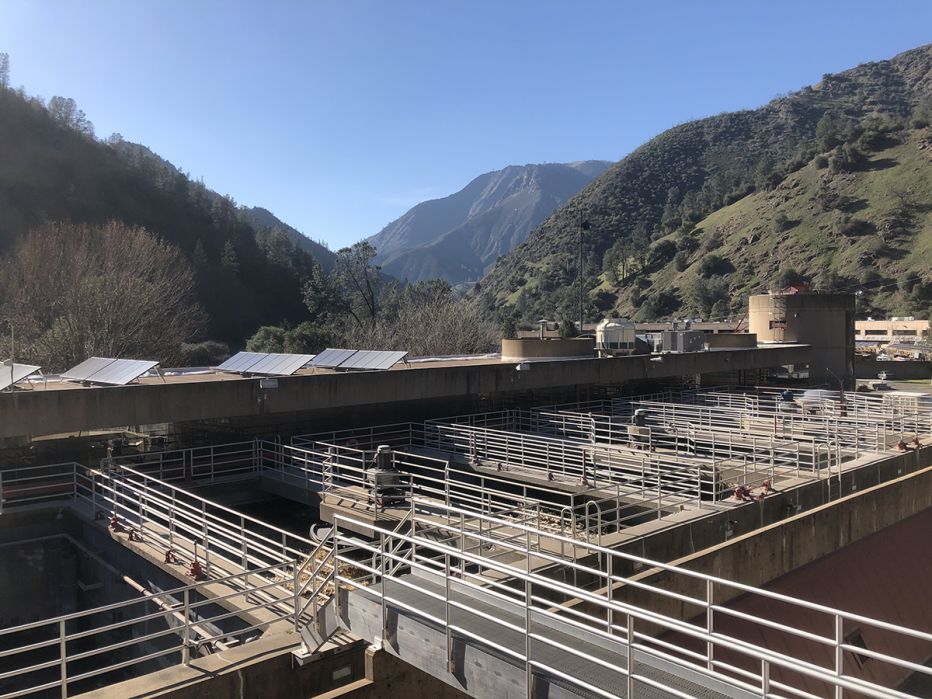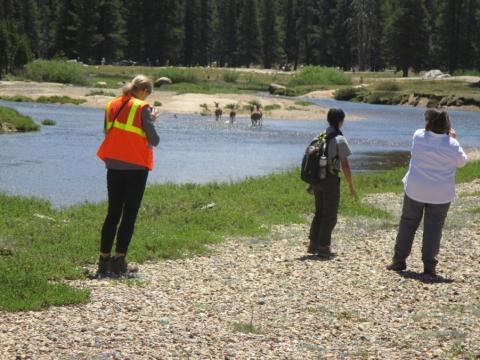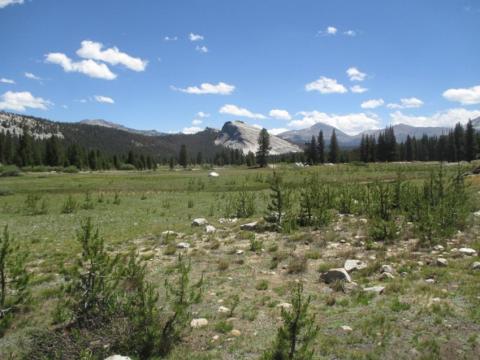Yosemite National Park
Working with the National Park Service, Jacobs delivers rehabilitation and design of park wastewater treatment plants, furthering the health and safety of staff, visitors and the environment.

El Portal Wastewater Treatment Plant
In 1971, the National Park Service (NPS) engaged Jacobs to provide architecture and engineering services for a ski area sewage collection project at Badger Pass in Yosemite National Park. At the time, the 5-year contract cost was less than $10 thousand, but unlocked decades of follow-on work at the ski area. Nearly 55 years later, our dedication and commitment to furthering the NPS mission of preserving U.S. National Parks for the enjoyment, education, and inspiration of current and future generations has continued.
Our services at Yosemite have evolved from ski area sewage collection to focusing on rehabilitating and redesigning wastewater treatment plants (WWTP) in El Portal and Tuolumne Meadows. In these projects, Jacobs serves as the Designer of Record, providing various designs and supplementary services. These infrastructure projects provide vital resources to visitors, staff and the surrounding regions all while protecting critical waterways. Due to the unique landscape of these treatment plants, we worked closely alongside the NPS to deliver a successful upgrade keeping health and safety in mind while minimizing the environmental impact on these national treasures.
-
47
Year-old treatment plant in El Portal
-
1
Mgallons (mgd) (approx. 3.8 liters) per day treatment capacity in El Portal
-
55
Year-old treatment plant in Tuolumne Meadows
-
50 K
gallons (approx. 189,270 liters) per day treatment capacity in Tuolumne Meadows
El Portal
This project rehabilitates the 47-year-old WWTP located at El Portal, currently nominally sized at 1-million-gallons-per-ay to improve treatment efficiency and meet current standards for various seasonal flow conditions. As the Designer of Record, we delivered a correctly sized updated design and modern treatment process to meet Yosemite's current and future needs.
Alongside the update, the project also addresses many safety concerns for plant staff. We improved access to equipment and facilities, added mechanical lift capability, designed buildings for code compliance and upgraded the firefighting capacity. We also considered safety when selecting the chemicals used in the process. Changing from anaerobic to aerobic digestion of solids removes personnel's exposure to methane gas and the fire hazards it creates.
To ensure communities did not have a disruption in service from getting clean, treated water, the upgrades needed to happen simultaneous to maintaining continuous operations The facilities were highly integrated, with few places where construction phasing could occur. To address this, the design team, in close communication with the NPS, created a plan to construct new treatment facilities within the current plant area while keeping the existing process operational. This plan reduces construction time while minimizing interactions between plant staff and construction crews, significantly increasing safety by enabling each group to work independently.
“Compared to a typical municipal wastewater treatment plant project, the NPS projects have many more stakeholders with an enormous range of interests. This presents additional challenges to incorporate, but the willingness of all the individuals to work collectively to arrive at optimal decisions is impressive.”
Tuolumne Meadows
This project replaces a 55-year-old wastewater treatment plant in the Tuolumne Meadows area with a new, upgraded WWTP and replaces the 90-year-old plant effluent pipeline that crosses Tuolumne Meadows and the Tuolumne River. It also includes replacing and demolishing existing storage ponds and adding a tertiary treatment and solids dewatering process to the plant to comply with the Tuolumne River Plan.
What makes this project stand out is the location of the plant. Previously occupied by indigenous peoples, the NPS and team had to be sensitive to the history and cultural traditions of the region. We collaborated with the NPS and the local community in stakeholder workshops to make decisions and find optimal solutions for plant staff, considering environmental impact. Through these sessions, we identified a new suitable location for the plant and pipeline with minimal effects on the historic architecture, natural and culturally sensitive areas in the vicinity and strict compliance with the Tuolumne River Plan.
Another factor our team considered was the remote nature of the location. The Tuolumne Meadows area is closed and inaccessible from October to May. This limited access led to the careful design consideration of the treatment process and the ability to start and stop quickly with a limited seasonal construction window. Only one plant operator is located in the area at a time and typically on-site only during the daytime. We designed the treatment process and equipment to accommodate this limitation, with worker safety as a high priority.
“Through projects like El Portal and Tuolumne Meadows, we are honored to support the mission of the National Park Service, protecting and preserving our natural resources and national treasures. These efforts modernize and upgrade critical facilities, delivering safe and clean water to visitors and staff for decades into the future.”
Trailblazing ahead
Through both projects, the Jacobs and NPS teams worked closely to ensure the health and safety of staff, visitors and the environment. While managing unique sites, aging infrastructure and culturally sensitive locations, we ensured the NPS's mission remained at the forefront of each project while protecting essential waterways. As we continue to work on projects at Yosemite, we look forward to furthering the legacy that started in 1971.
-
El Portal WWTP
-

Tuolumne Meadows environmental research
-

Tuolumne Meadows at Yosemite















































